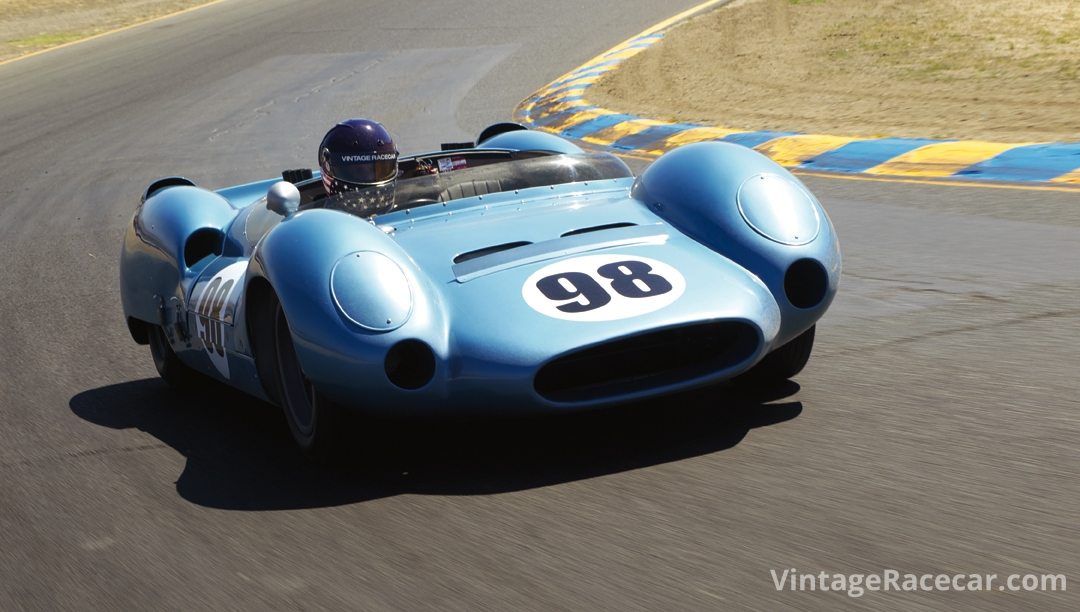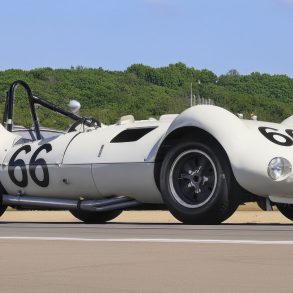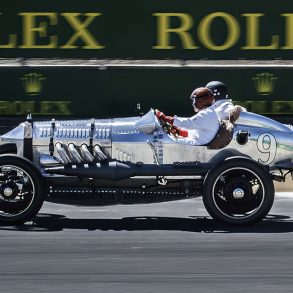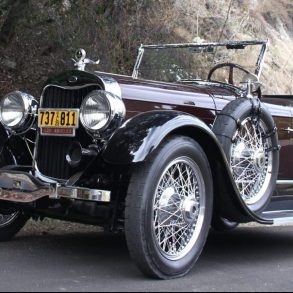Whether you work on your own cars or not, at some juncture in your life you inevitably have to pick up a tool to fettle something on your car. Whether you consider your tools a necessary evil or an extension of your person, I think we can all find meaning in the handy glossary reproduced below. I wish I could take full credit for this erudite study of tools, but it was sent to me anonymously via the Internet…obviously by a learned, but modest, craftsman.
Drill Press—A tall, upright machine useful for suddenly snatching flat metal bar stock out of your hands so that it smacks you in the chest and flings your soda pop across the room, splattering it against that freshly painted air cleaner you were drying.
Wire Wheel—Cleans paint off bolts and then throws them somewhere under the workbench at the speed of light. Also removes fingerprints and hard-earned guitar calluses from fingers in about the time it takes you to say, “Yeou sheeeet!”

Editor
Electric Hand Drill—Normally used for spinning pop rivets in their holes until you die of old age.
Pliers—Used to round off bolt heads. Sometimes used in the creation of blood-blisters. The most often-used tool by women.
Belt Sander—An electric sanding tool commonly used to convert minor touch-up jobs into major refinishing jobs.
Hacksaw—One of a family of cutting tools built on the “Ouija-board principle.” It transforms human energy into a crooked, unpredictable motion, and the more you attempt to influence its course, the more dismal your future becomes.
Vise-grips—Generally used after pliers to completely round off bolt heads. If nothing else is available, they can also be used to transfer intense welding heat to the palm of your hand.
Welding Gloves—Heavy-duty leather gloves used to prolong the conduction of intense welding heat to the palm of your hand.
Oxyacetylene Torch—Used almost entirely for lighting various flammable objects in your shop on fire. Also handy for igniting the grease inside the wheel hub while you were trying to remove the bearing race.
Whitworth Sockets—Once used for working on older British cars and motorcycles, they are now used mainly for not-so-closely impersonating that 9/16-inch socket you’ve been searching for the last 45 minutes.
Table Saw—A large stationary power tool commonly used to launch wood projectiles into the side of your car.
Hydraulic Floor Jack—Used for lowering an automobile to the ground after you have installed your new brake shoes, trapping the jack handle firmly under the bumper.
Eight-foot-long Yellow Pine 2 x 4—Used for levering an automobile upward off a trapped hydraulic jack handle.
Tweezers—A tool for removing wood splinters and wire wheel wires.
E-Z-Out Bolt and Stud Extractor—A tool, ten times harder than any known drill bit, that snaps neatly off in bolt holes thereby ending any possible future use.
Two-ton Engine Hoist—A tool for testing the maximum tensile strength of everything you forgot to disconnect.
Craftsman 1/2” x 24” Screwdriver—A very large pry bar that inexplicably has an accurately machined screwdriver tip on the end opposite the handle.
Aviation Metal Snips—See Hacksaw.
Trouble Light—The home mechanic’s own tanning booth. Sometimes called a drop light, it is a good source of vitamin D, “the sunshine vitamin,” which is not otherwise found under cars at night. Health benefits aside, its main purpose is to consume 40-watt lightbulbs at about the same rate that 105-mm howitzer shells might be used during, say, the first few hours of the Battle of the Bulge. More often dark than light, its name is somewhat misleading.
Phillips Screwdriver—Normally used to stab the vacuum seals under lids and for opening old-style paper-and-tin oil cans and splashing oil on your shirt; but can also be used, as the name implies, to strip out Phillips screw heads. Women excel at using this tool.
Straight Screwdriver—A tool for opening paint cans. Sometimes used to convert common slotted screws into nonremovable screws.
Air Compressor—A machine that takes energy produced in a coal-burning power plant 200 miles away and transforms it into compressed air that travels by hose to a pneumatic impact wrench that grips rusty bolts which were last overtightened 30 years ago by someone at Ford, and instantly rounds off their heads. Also used to quickly snap off lug nuts.
Pry Bar—A tool used to crumple the metal surrounding that clip or bracket you needed to remove in order to replace a 50-cent part.
Hose Cutter—A tool used to make hoses too short.
Hammer—Originally employed as a weapon of war, the hammer nowadays is used as a kind of divining rod to locate the most expensive parts adjacent to the object we are trying to hit. Women primarily use it to make gaping holes in walls when hanging pictures.
Mechanic’s Knife—Used to open and slice through the contents of cardboard cartons delivered to your front door; works particularly well on contents such as seats, vinyl records, liquids in plastic bottles, collector magazines, refund checks, and rubber or plastic parts. Especially useful for slicing work clothes, but only while in use.
Dammit Tool—Any handy tool that you grab and throw across the garage while yelling “DAMMMMMIT!” at the top of your lungs. It is also, most often, the next tool that you will need!










